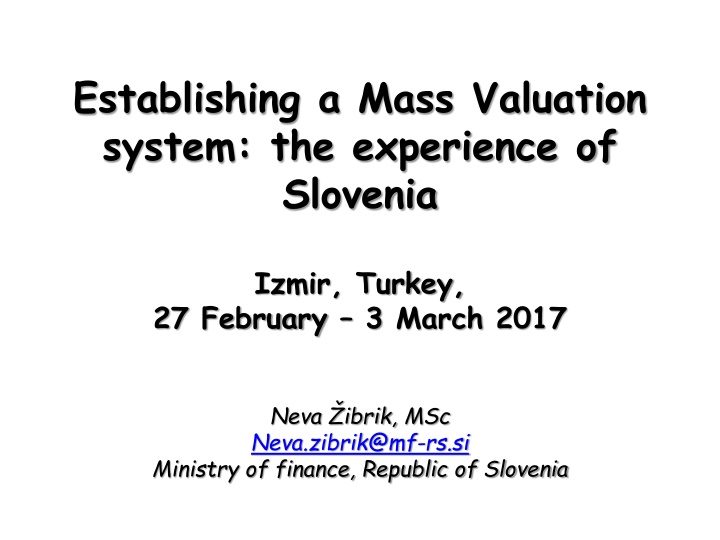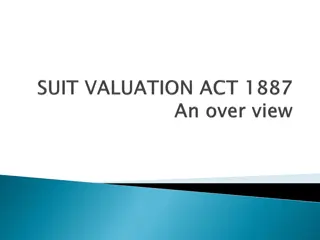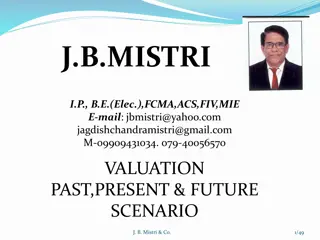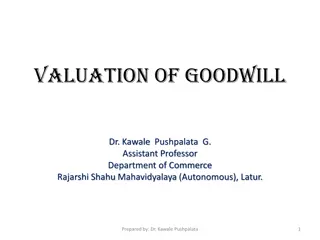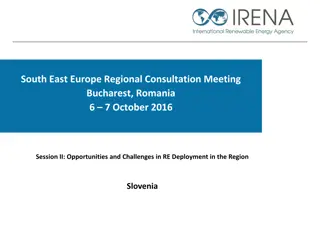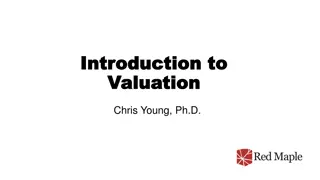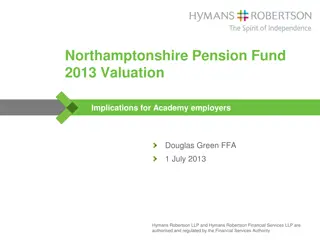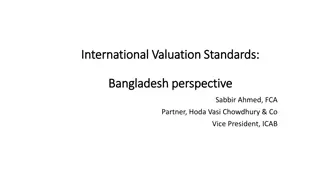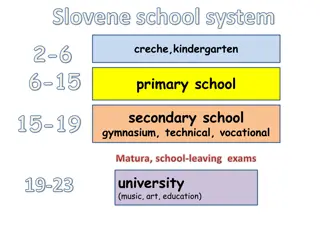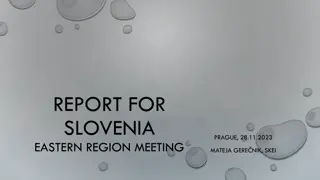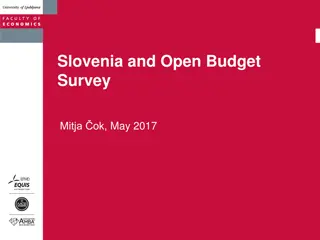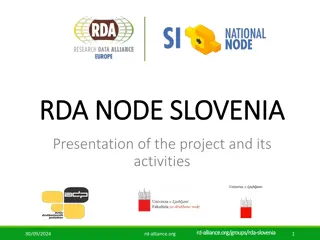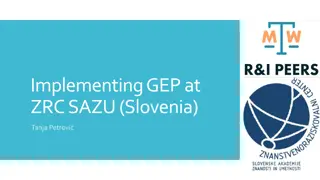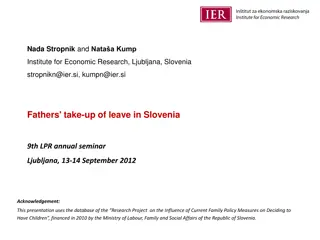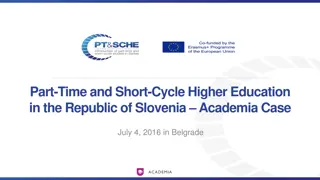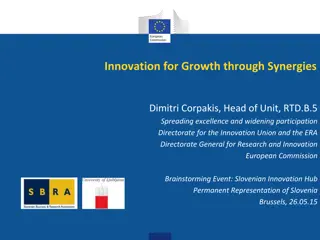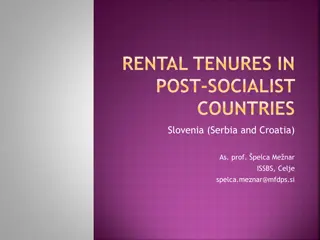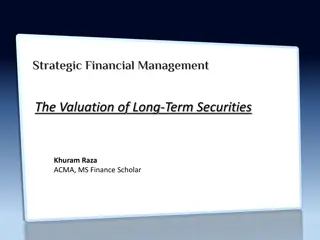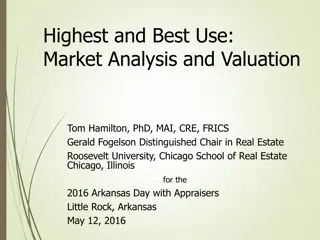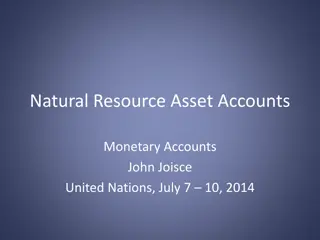Establishing a Mass Valuation System: The Experience of Slovenia
Slovenia's journey in establishing a mass valuation system post-independence in 1991 is explored, detailing the tax structure, challenges faced such as double taxation and arbitrary valuation, and the political intent to introduce a uniform real estate tax system.
Download Presentation

Please find below an Image/Link to download the presentation.
The content on the website is provided AS IS for your information and personal use only. It may not be sold, licensed, or shared on other websites without obtaining consent from the author.If you encounter any issues during the download, it is possible that the publisher has removed the file from their server.
You are allowed to download the files provided on this website for personal or commercial use, subject to the condition that they are used lawfully. All files are the property of their respective owners.
The content on the website is provided AS IS for your information and personal use only. It may not be sold, licensed, or shared on other websites without obtaining consent from the author.
E N D
Presentation Transcript
Establishing a Mass Valuation system: the experience of Slovenia Izmir, Turkey, 27 February 3 March 2017 Neva ibrik, MSc Neva.zibrik@mf-rs.si Ministry of finance, Republic of Slovenia
Population: 2,1 million Area: 20.273 km Levels of government: - central - local (212 municipalities)
Situation before the development of mass valuation: - Slovenia declared independence in 1991 - Privatization enforced in 1991 - Complete land book (ownership of all land) - Complete land cadastre (parcels) - No building cadastre
REAL PROPERTY TAXATION LOCAL GOVERNMENT (all taxes are levied and collected by central tax authority): 1. TAX ON (IMMOVABLE) PROPERTY 2. CHARGE FOR THE USE OF BUILDING LAND 3. TRANSFER TAX (in SLOVENIA: 2 %) 4. INHERITANCE AND GIFT TAX CENTRAL GOVERNMENT: 5. VAT 6. INCOME TAX ON CAPITAL GAIN
RECURANT TAXES ON REAL PROPERTY TAX ON (IMMOVABLE) PROPERTY Tax object buildings, parts of buildings, apartments, garages, business premises Evidence tax register (central) Tax payer physical persons Tax base Administrative value (no. of points X value of points) Tax rates In the law: 0,1 1,25 (progressive) Exemptions - residential property of less than 160 m2 - buildings for agriculture - cultural monuments - 10 years for new resid. buildings CHARGE FOR THE USE OF BUILDING GROUND Building land and buildings municipal register (local) physical and legal persons / Rates set by municipalities property used by embassies and international organizations, army and church 5 years for new resid. buildings - -
Problems with real estate tax system - two incomparable systems - double taxation of physical persons - taxation limited to only certain types of real estate - relatively low income (200 million EU, 0,6 % of GDP, 15,5 % of total tax revenue of municipalities) - arbitrary valuation in municipalities (no common rules) - the understanding of a system as nontransparent and unfair - unconstitutional solutions as determined by Constitutional court - the most often reason for tax complains (50 % of all tax complains).
POLITICAL INTENTION OF INTRODUCING UNIFORM REAL ESTATE TAX (from 1995) one uniform real estate tax wide tax base (all real estates) centralized evidences and valuation cost effectiveness, uniformity setting the tax base on market value transparency and fairness tax can be used by municipalities as spatial and communal instrument
Development of mass valuation system in Slovenia 1. ONIX project (1997-1998) supported by WB/IBRD 2. Real Estate Registration Modernization Project (2000-2005) supported by the World Bank: Digitalization of land cadastre Establishment of central cadastre of buildings and real property register Development of the platform for mass valuation Proposal for real estate tax system New legal frame: - Real Property Mass Valuation Act - Real Estate Recording Act - Law of Property Code
Real Property Mass Valuation Act (2006) Mass valuation service established at Surveying and mapping authority (SMA): 21 experts from different field of work (individual valuers, geodets, civil and agricultural engineers, economists, mathematicians, computer experts etc.). Law established database for recording market data (prices, rents) Law regulates that mass valuation has to follow IVS and mass valuation methods and set the modeling procedures New valuation every 4 years Detailed rules and quality criteria are set in executive act Cost of establishment the evidences and mass valuation: 14 million EUR (less than 8 % of existing property taxation system revenue)
Price collection (from transfer tax and VAT) (all 2015 October 2016) MODEL All sales Quality (free market) sales Share of quality sales 16167 8379 2291 9031 3175 1093 903 4351 446 130 13266 5585 1800 6948 2566 636 553 3337 163 83 82 % 67 % 79 % 77 % 81 % 58 % 61 % 77 % 37 % 64 % appartments houses garages Farm land Forest land offices Bussines prem. Building land industy Other land 10 10
Quality controle k - aparments MEDIAN: 1,03 AVG STDEV 0,16 1,04 11 11 11
Presentation of models: formulas transformed in value zones and value tables (case for apartments) 12 12
Implementing Mass Valuation Development of first models took three years From January 2012 valuation models are approved by the Government In 2012 Generalized Market Value (GMV) was annotated to all real estate (6,5 million) in real property register Two revaluations: in 2014 and 2015 Total value for all real estates in Slovenia is estimated on 120 billion EUR (60 % of wich are residential properties)
Attempt of introducing Real property tax in 2014 Taxing all properties (only few exemptions) Due to economic and fiscal crisis the law proposal followed the idea to rise the revenue for 100 % due to including all real estates in taxation: - leaving the tax on business real estate at the existing average (0,7 %) - raising the tax for residential properties (twice of average effective tax rate 0,08 %) - redirect half of the revenue to the state budget, leaving to the municipalities same revenue as in a previous system. Real Property Tax Act was adopted in a Parliament at the end of 2013 and was introduced with 1. 1. 2014.
Constitutional court decision (March 2014) Real Property Tax Act is to be abolished due to: Setting the tax base on GMV, which is determined by unconstitutional solutions in Real Property Mass Valuation Act Setting different rates by unfounded criteria Not possible to appeal to all elements of the valuation Mass valuation should not be used for taxes: Too many solutions in the implementing regulation and not in the law (legal uncertainty) The possibility of the owner to argue and influence the value is limited
Use of Mass Valuation By the law Mass valuation system is intended for tax and other public purposes defined by law GMV is publicly available By the decision of Constitutional court GMV can not be used for taxation Current public use: - For assessing the wealth of the applicants for different social benefits - In statistical analyses (calculating housing index, monitoring land price index, in calculating GDP etc.) - For expropriation (compulsory purchase) and land consolidation in public interest (upgrading methodology which includes individual valuers) Private use: - Banks recommended by The National Bank (for setting the mortgage credit value, for assessing the capital adequacy ) - The Courts - Notaries - Appraisers - Individuals Broad use of collected market data which are also publicly available
Actions for improving the situation Slovenia asked IMF for revision of mass valuation system (the result shows that the system is internationally comparative and of high quality) We are trying to increase the understanding and acceptance of mass valuation (workshops, establishment of professional body to monitor and verification of the system etc.) We are preparing new mass valuation law: - preserving the system as independent and multipurpose (promp adapting to the market) - putting all relevant content in the law (Slovenian standard for mass valuation) - increasing legal security by adding possibility to argue the value in a case of special circumstances - strengthening the control over data in the registers
Recommendations Develop a system with full cooperation of all involved institutions and with wide professional consesus (mass and individual valuation are complementary!). Prepare concisely legal base (standardization, unification) Try to establish mass valuation system as multipurpose and of high quality (data, models, up to date etc.), which will: - reduce marginal costs - widen the scope of use (more cost effective) - ensure the additional quality control. I WISH GREAT SUCCESS TO YOUR PROJECT!
